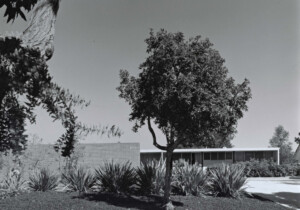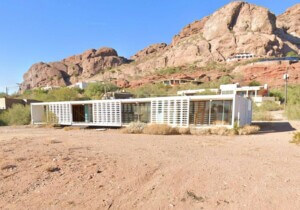The slow deconstruction of Kisho Kurokawa’s Nakagin Capsule Tower in Tokyo began on April 12 and will continue through the end of the year. The tower’s demolition is no surprise, as its problems were well known from the start. That it survived half a century is a feat in and of itself. Kurokawa showed us a version of a possible pod world that proved to be immensely influential, for better and worse. While we shouldn’t repeat the tower’s mistakes, its optimism about alternative futures is a legacy worth noting.
To mark this moment, AN gathered remembrances in text and image from those whose trajectories brought them in close contact with the building. Below is the third entry in our five-part series on the Nakagin Capsule Tower, a contribution in photographs and words from Filipe Magalhães and Ana Luisa Soares of Porto, Portugal-based studio fala atelier.
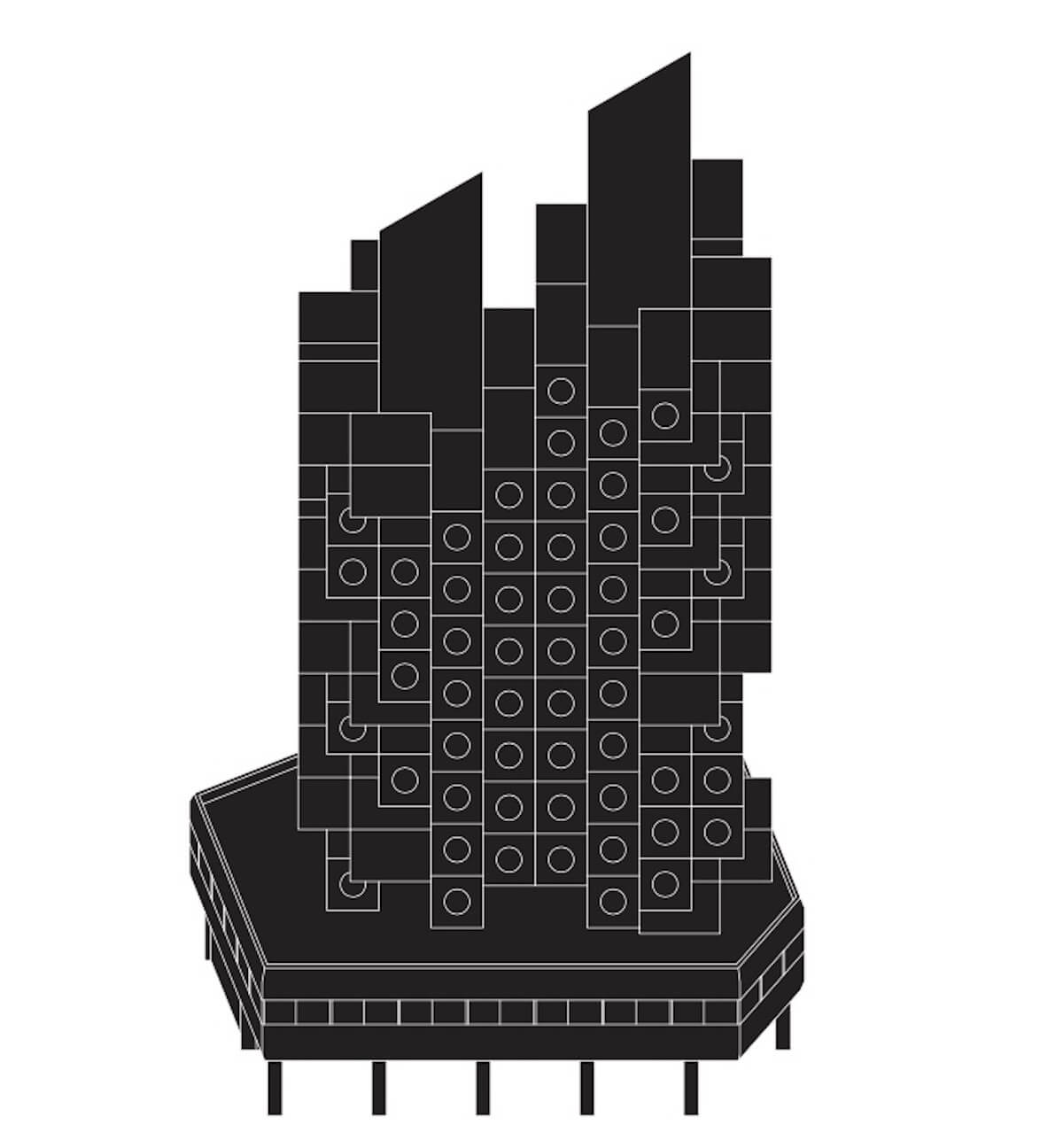
On a warm September evening ten years ago, we couldn’t have known how important our chance meeting with Kenzo Fukuda, a Japanese fish broker, would be. By 2012, the informal public and disciplinary debate about the Nakagin Capsule Tower had been going on for some time. Architects like Toyo Ito and even Kisho Kurokawa himself were pro-demolition: After all, that would have been the Metabolists’ response. A few other voices, perhaps more detached from the original 1960s group or just imbued with a nostalgic feeling they had difficulty expressing in Japan’s fast-paced society, suggested preservation. That night, we had no opinion on the topic: We were excited because we had just arrived in Tokyo and we were going to visit one of the must-see projects from our list of archi-tourist destinations.
The building in front of us was not the one we were promised by the books we read. The pristine white capsules were now gray, old, damaged structures. Patches were everywhere, with signs of corrosion and water leaks hiding in plain sight. Of all the circular windows, only half a dozen were illuminated. The convenience shop on the street level didn’t belong to any of the usual bigger chains in the city, and it had goodies we couldn’t find anywhere else. We didn’t notice any of these details. Instead, we saw the Nakagin we wanted to see.
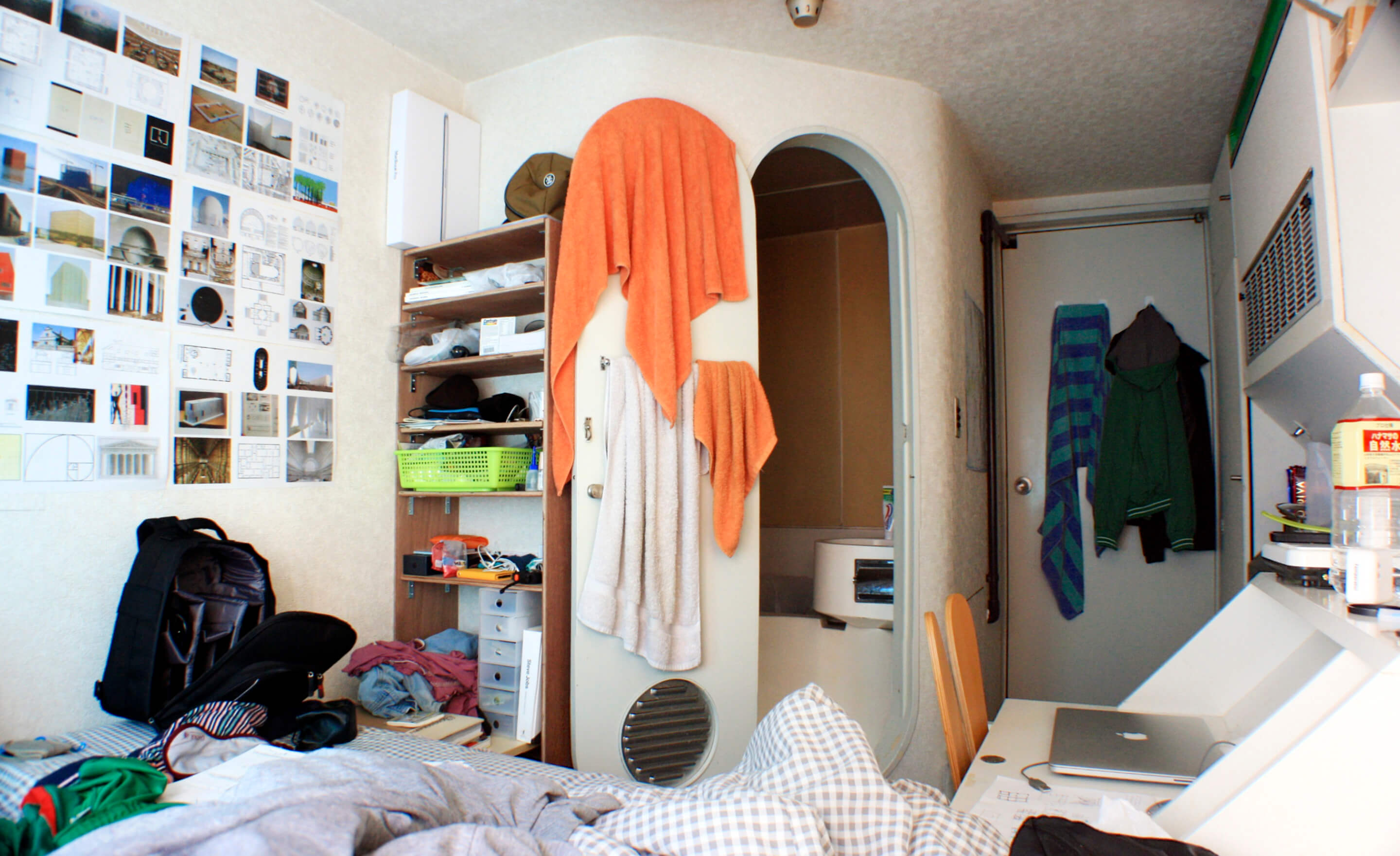
We had no plan other than just acting casual and sneaking inside, as architects often do. The security guy kicked us out right away, but in those seconds of trespassing, the right tower elevator opened and Fukuda, the fish broker who happened to be the building’s only English speaker, showed some interest in our plight. “Why do people insist on visiting this old building?” he asked. We improvised: “We’re looking for a place to live.”
It’s true that we already had a place to stay, a tiny room with no windows in a shared house a bit far from the “center” near Honkomagome. Fukuda countered: “I think I have a friend with a capsule to rent. Do you want to visit?” We instinctively answered yes. But could we really live there?
A few minutes later, we were in Fukuda’s capsule, where several dust-covered winter coats hung above his sofa, which was also his bed. The furniture seemed lifted from an antique shop, and the TV played a noisy talk show. Invoices, receipts, and other papers were glued all over the walls, evidence that the room served as his office during the day. He warned us right away that “the building was old, and there was no hot water.”
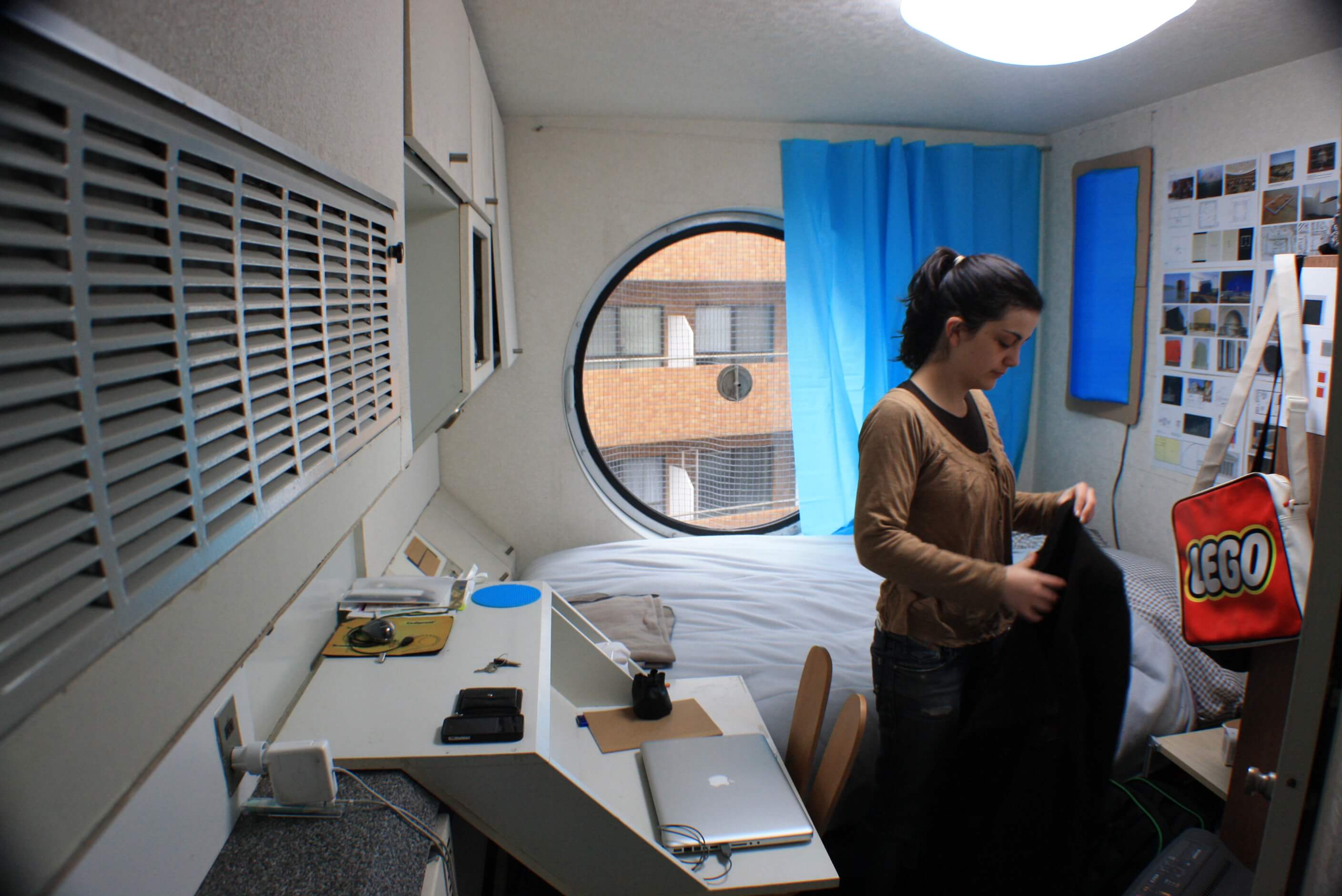
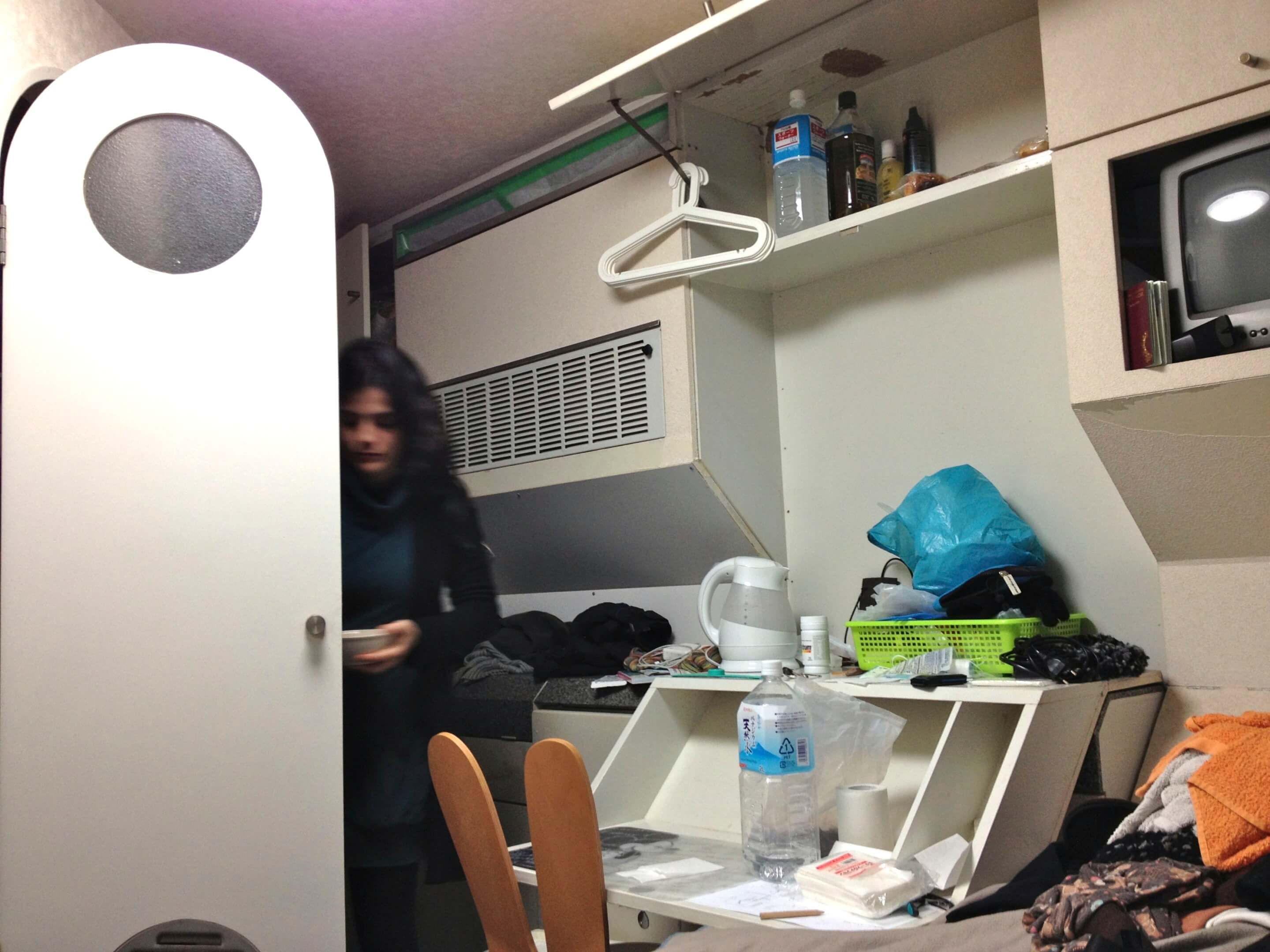
We visited capsule B806 the next day. The floor still had the original blue carpet, and the famous wall cabinet was nearly intact. The bathroom was as advertised: Without hot water, occupants took scheduled showers in a dedicated prefabricated unit on the ground floor. Okamoto-san, our soon-to-be landlord, was so surprised by our interest that he gave us a special price and almost felt bad for renting the capsule to us. Suddenly we were living in Ginza, supposedly one of the most expensive neighborhoods in the world, in our own “apartment” for less than 300 euros a month. Sometimes you just get lucky.
For the year that followed, capsule B806 was our home, office, and headquarters. Fala atelier was founded there, inspirational images were pinned up, guests passed through, photographers captured wonders, myths were clarified, and articles were written. In our eyes, it was a lively building. Our neighbors were funny: From the yakuza next door, who specialized in selling Hello Kitty dolls and sex toys, to a couple who owned the only fully preserved capsule along with its memorabilia, we could find all kinds of stories. Tatsuyuki Maeda-san, who became one of the biggest advocates for the building’s preservation, had just finished refurbishing his first capsule (including an unexpected wood floor) and was on his way to owning and refurbishing another ten units in the following years. Communication was difficult, but with some help we managed to interview many residents, document their capsules, and hear their stories.
The building clearly had serious problems from the start. It had been a “bluff” project, a real estate stunt, that could have also led to a future that never happened. Still, the futuristic capsules were built in a shipyard largely following traditional construction techniques. They were never truly meant to be replaced, and the project ended up not leading to others that could have indeed worked. The Tokyo public was sold a beautiful fiction that was never meant to happen. Kurokawa, always a provocateur, knew this the whole time.

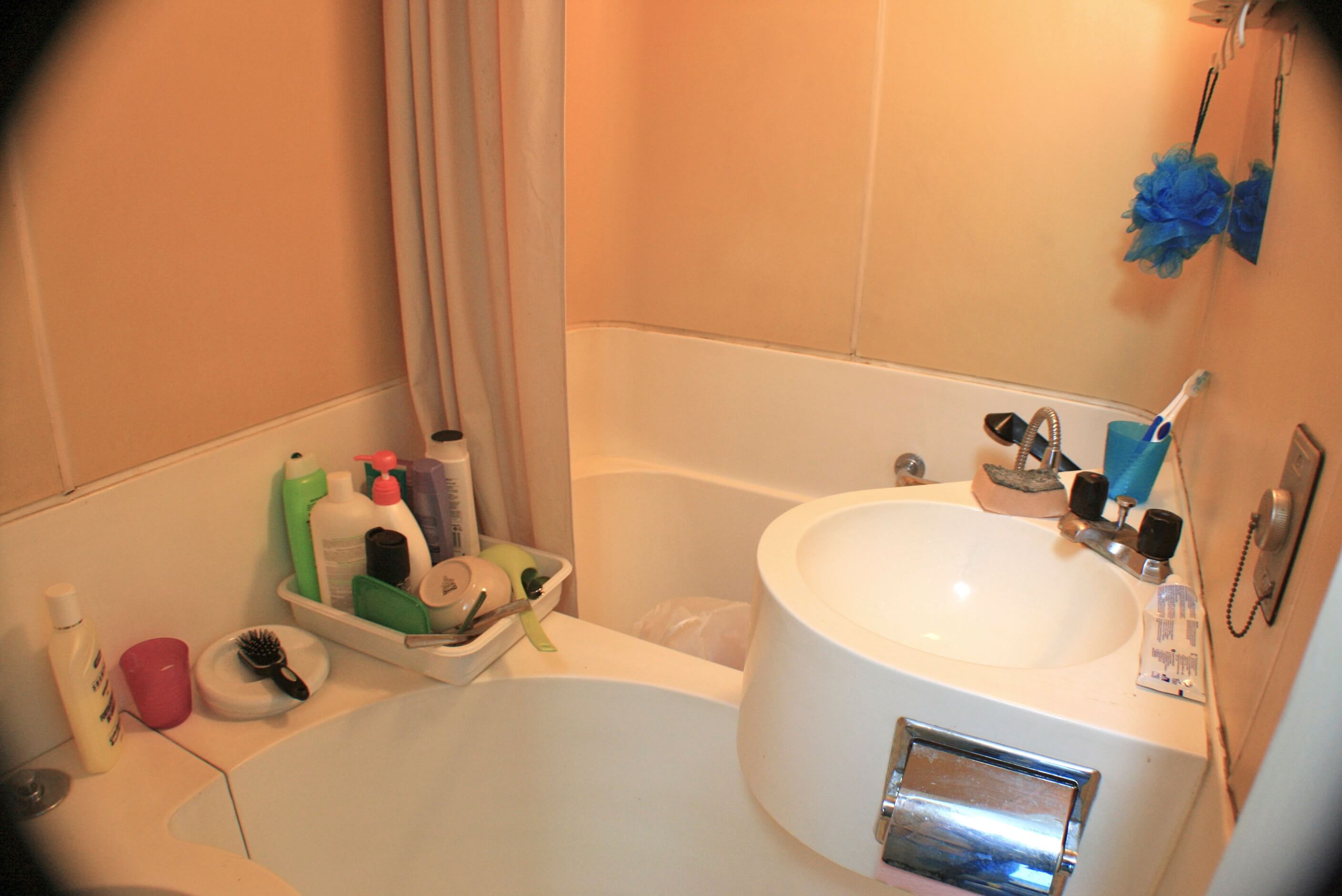
In the 40 years before we arrived, the plumbing problems became evident, and maintenance was impossible, owing to the hidden placement of the water connections between the capsules and the core. Rather than being independent pods, they stacked vertically, making the removal of one capsule impossible.
The scars were everywhere: New pipes were exposed in the staircases, and sewer water dripped from the balconies. There were rotten capsules, populated with failing plastics and moss, whose doors had collapsed, leaving the interiors visible from the common stairs. One day we woke up to a construction team covering the building with a net to prevent falling pieces from striking anyone on the street. And we haven’t even mentioned the asbestos. The building was literally a crumbling ruin. Removal was the obvious solution; the only question was when.
It was difficult to express how we felt about it, but we made our first attempt in “The Metabolist Routine,” an essay for Domus 969 in 2013. Pre-Airbnb, we were the building’s first ever non-Japanese residents, and we made an effort to show it to the world. Joseph Grima, the then editor of Domus who invited us to tell our story, summarized it best: “Everyone thinks they know the Nakagin, but no one knows how it is to live there, much less today.”
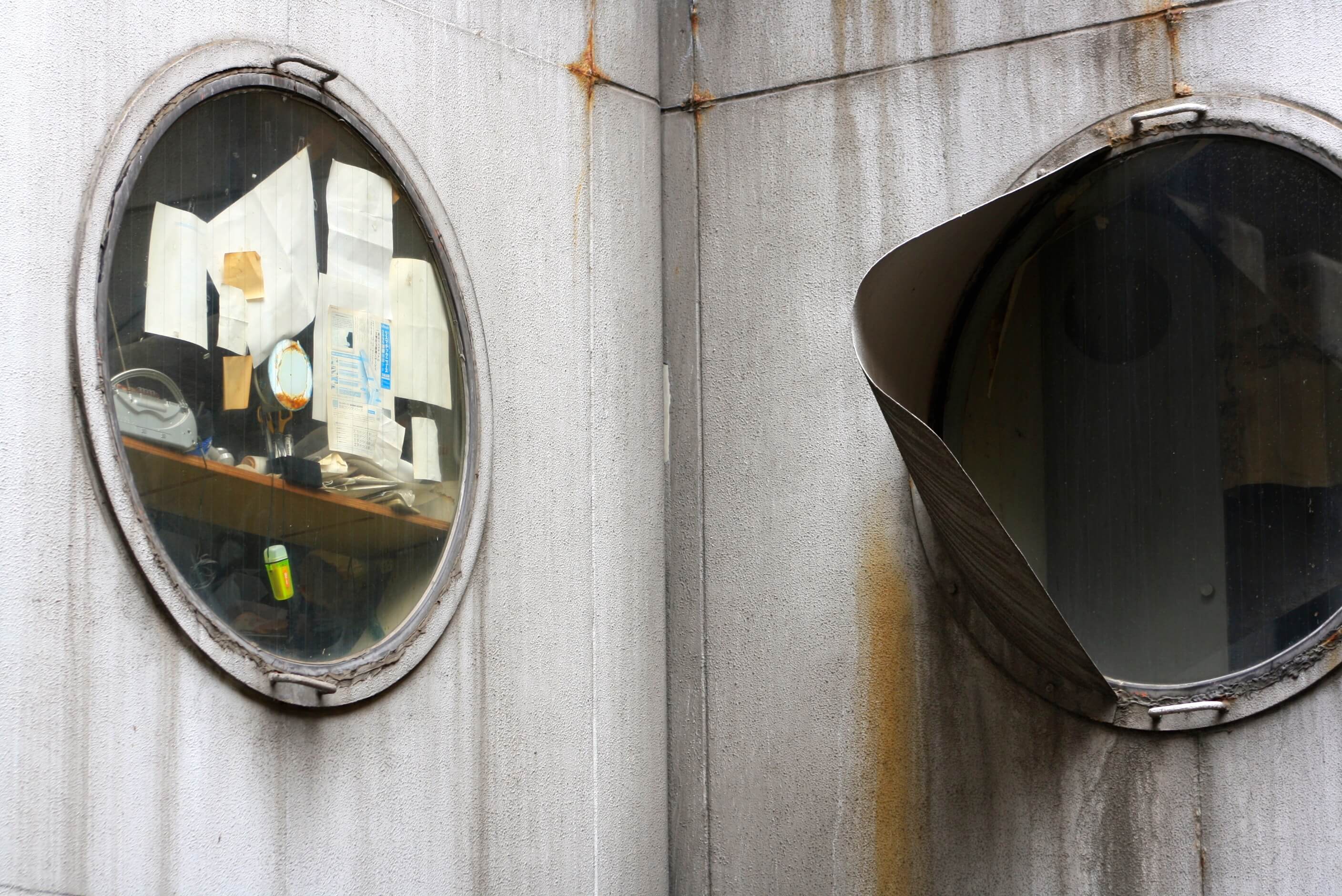
A few years later, we returned to Tokyo and received a warm welcome from the remaining inhabitants, mostly because of our friendship, but also due to the media attention we achieved for the building. They even prepared a capsule for us to stay in for the summer.
Demolishing the Nakagin was a logical solution to a complex problem. The building was in terrible condition, and, though preservation schemes were pitched, no one proposed a (financially) viable alternative. Refurbishing the capsules was not possible, and restoring the tower as a monument would be conceptually insulting to the Metabolists. Classifying it as a historic structure was also complicated because of its futuristic appearance, even half a century after its completion. With deconstruction currently underway, years of speculation have finally come to an end. What was once the tallest building in the neighborhood was quickly overshadowed by its context. Tokyo, which today is bigger than the Metabolists could have ever predicted, ended up absorbing the Nakagin into its relentless churn.
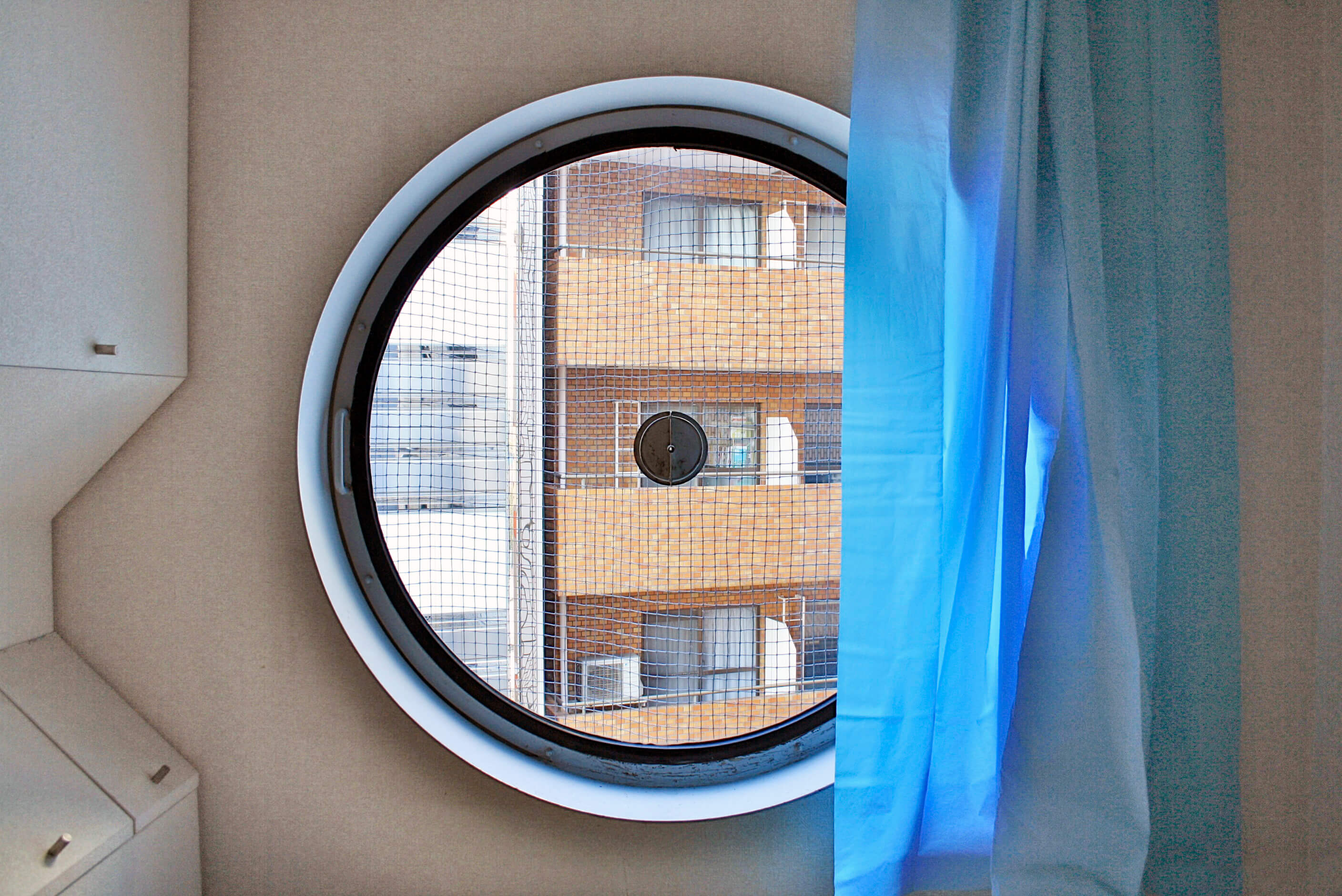
The last time we saw Kenzo Fukuda was in 2015. He lived and worked in the tower and enjoyed drinking every night. He liked us and showed us nice places to eat in the neighborhood. He was from a city a few hours away from Tokyo, where he would go on his motorbike (which we never saw) on the weekends. We were lucky to meet him, as he changed our lives. He was probably the best example of the new city nomad that Kurokawa talked about all those years ago.
Filipe Magalhães and Ana Luisa Soares founded fala atelier in capsule B806 of the Nakagin Capsule Tower in 2013.








